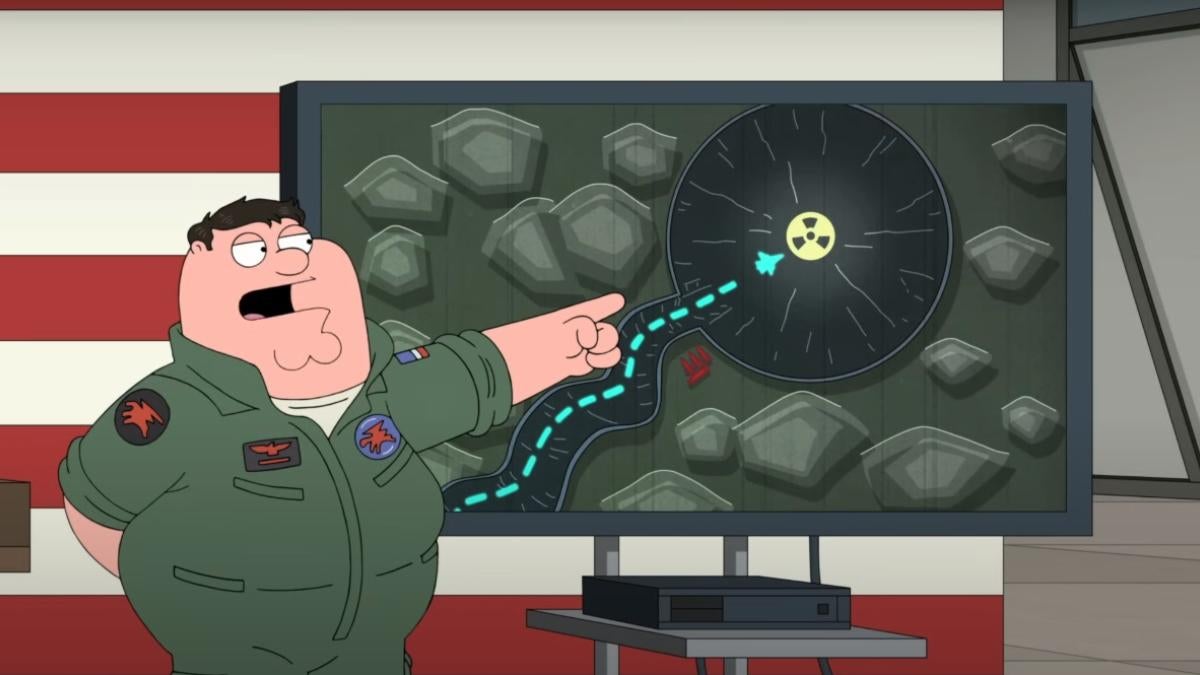Joy Operations #1 Review: An Abundance of Style Short on Substance
Joy Operations #1 introduces readers to a world set 55 years in our future, although based upon its appearance and functioning it may as well be 555 years. Corporations control a world defined by near-magical technology, including floating skyscrapers, superpowered blobs of bodyguard, and weapon selection arrays right out of a video game. It's here that readers meet Joy, in her role as EN·VOI, provides specialized protection and services to a particularly powerful family, the Jonando Trust. This pitch is promising at first glance, but throughout the first issue the many intriguing elements are left unexamined while an all-too-familiar narrative is thrust upon the audience.
The story begins with green narrative captions detailing what appear to be Joy's thoughts. This voice acts as a guide to readers as they explore the Jonando Trust (as it's also the city) and eventually becomes a source of interminable exposition. After a series of early action sequences displaying Joy's tremendous physical ability and technological assets, the heart of the story is revealed. While I'll avoid spoilers in this space, this twist simultaneously confuses and simplifies the narrative.
The story becomes confused in that it's unclear exactly what Joy is doing and why. This issue becomes worse on repeat readings when the question of where Joy begins and ends is even less clear. Perhaps this will be cleared up in future issues, but here it is alienating rather than inviting. Joy is the sole focus of this narrative—the world around her is only built out to explain her role within it, and that leads to the second problem.
Joy's employer is revealed to be a terrible threat to all of humanity in a pages-long monologue that speaks primarily in vagaries. It's a superhero trope in which one specific politician or CEO is especially bad and needs to be removed. This simplifies the story and makes the colorful world surrounding Joy far less interesting. Questions of how these city-states evolved or what it means to be ruled by Trusts are diminished because "this is how things are and that one person might make them bad." In what initially appears to be a sprawling sci-fi setting, the essential questions related to that genre are largely dismissed.
What remains is a character who fits the Jinxworld mold with some unexpected circumstances and an aesthetically pleasing setting for adventure. It might be characterized as a fine, if derivative, pulp tale except the inability to distinguish when the protagonist is acting leaves it as a puzzle not worth solving.
What will bring readers back to see if Joy Operations #2 clears up its narrative confusion or offers any potential depth is the first issue's appearance. While the script leaves Joy's autonomy in doubt, her actions are always presented in crystalline fashion. The sharp, long lines of this non-Euclidean city create a wondrous backdrop and artist Stephen Byrne plays with the resulting heights to great effect. The absurd monstrosities and holographic weapons used throughout ensure the action sequences are exciting purely because of their own momentum across a number of spreads. Byrne makes the world of Joy Operation appealing, even when Joy and her surrounding mysteries are not.
Joy Operations #1 is a lackluster debut. Although it presents an appealing surface to its technology-infused future, there's little depth to be found beneath that surface. Relying on obvious villains and unable to clearly communicate a core narrative premise, the issue falls far short of expectations, except for in fast-paced action sequences.
Published by Dark Horse Comics
On November 24, 2021
Written by Brian Michael Bendis
Art by Stephen Byrne
Colors by Stephen Byrne
Letters by Joshua Reed
Cover by Stephen Byrne




